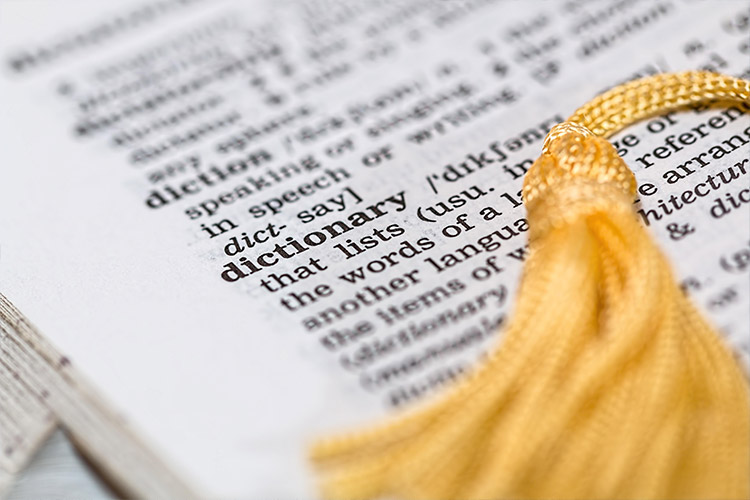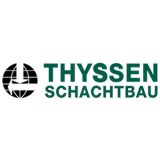Certified translations are a necessary step to confer legal validity to foreign documents when they are to be submitted to courts or other authorities. The documents must be translated by a sworn translator and sealed with their signature and stamp.

What is a certified translation?
A certified translation is a complete and correct translation of official documents that has been prepared by a sworn translator. A certified translation is verified by a stamp and signature and is therefore valid for use by public offices, authorities, courts or other official institutions. Certified translations are often necessary for stays abroad, whether for studying, working or living abroad for a longer period of time.
Features of a certified translation:
- Personal stamp of the sworn translator;
- Translator’s signature;
- Certification note confirming that the translation is complete and correct;
- Date and place of certification;
- String and seal for multi-page documents.
Official, certified, notarized - what's the difference?
The terms “certified translation” and “official translation” are often used synonymously and essentially describe the same thing: a translation prepared by a sworn translator and confirmed as correct and complete by an official note with signature and stamp. These translations have an official force and are accepted by courts, authorities and other official bodies.
A certified translation is legally binding and must be carried out by a sworn translator. The term “notarized translation” is commonly used in everyday language, but technically, there is no such thing as a notarized translation in the strict sense. Rather, people refer to a “certified translation with notarization.” This means that a notary only certifies the translator’s signature - not the translation itself - since a notary is not authorized to translate from or into a foreign language.
A certified translation is only produced by sworn translators who have been officially appointed by a court. These translators are authorized to translate documents and certify the translation. In Germany, sworn translators are registered in official lists of the judicial authorities.

Who is authorized to certify translations?
Only sworn translators are permitted to produce certified translations. They may affix their translations with a stamp, signature, and certification note.
These laws define the conditions under which a swearing-in can take place and what rights and obligations are associated with it. The designation “sworn translator” is legally protected. Only individuals who have received official swearing-in are allowed to use this title and produce legally valid certified translations.
Wichtig: A simple translation by a non-sworn translator—even if it is of high quality—has no legal validity before authorities or courts without proper certification.
If you are unsure whether your translation needs to be certified or which requirements must be met, feel free to contact us! We will provide you with individual and competent advice.
How can we help you?
We work in several European countries with a wide network of fully qualified interpreters and translators who are officially appointed by a court. We offer certified translations of various official documents, including contracts, commercial register excerpts, court decisions, certificates, and all types of government documents. If needed, a certified translation can be apostilled or consularly legalized for use in over 100 countries.
| Region | Available Languages |
|---|---|
| Western Europe | German, English (UK), French, Italian, Catalan, Luxembourgish, Dutch, Portuguese, Spanish |
| Baltic States | Estonian, Latvian, Lithuanian |
| Eastern Europe | Polish, Russian, Czech, Ukrainian, Hungarian, Belarusian |
| Southeast Europe & Balkans | Albanian, Bosnian, Bulgarian, Croatian, Macedonian, Romanian, Serbian, Slovak, Slovenian |
| Northern Europe / Scandinavia | Danish, Finnish, Icelandic, Norwegian, Swedish |
| Southern Europe | Basque, Galician, Greek, Maltese |
| Caucasus | Armenian, Azerbaijani, Georgian |
| Central Asia | Kazakh, Kyrgyz, Uzbek |
| Asia & Middle East | Arabic, Chinese (Simplified & Traditional), Hebrew, Hindi, Japanese, Korean, Persian (Farsi), Thai, Urdu, Vietnamese |
| Americas (North & South) | English (US), French (Canada, Caribbean), Creole, Portuguese (Brazil), Spanish (Latin America) |
| Africa | Afrikaans, Amharic, Arabic (North Africa), Hausa, Somali, Swahili, Zulu |
| Oceania & Pacific | English (Australia, New Zealand), Maori, Samoan, Tongan |
Common mistakes in certified translations and how to avoid them
Certified translations play a central role in many official and legal matters. Incorrect or incomplete translations can lead to delays, additional requests, or even the rejection of applications. Below are the most common issues—and how to prevent them:
1. Incomplete translations
Official documents must be translated in full, including all stamps, seals, signatures, and handwritten notes. Omitting even minor details can prevent the translation from being recognized. Make sure the translator includes and translates the entire document, along with all formal elements.
2. Errors in specialized terminology
Legal, notarial, or technical terminology can vary significantly depending on the country and legal system. Inaccurate translations can lead to misunderstandings or legal complications. Work with translators who have specific expertise in the relevant fields and, ideally, experience with notarial texts.
3. Missing certifications or legalizations
In addition to the translation itself, some documents require an apostille or another form of legalization in order to be accepted internationally. Clarify early on which certifications are needed and allow sufficient time for obtaining them.
4. Outdated or Invalid Documents
Documents are often only valid for a limited period or may need to be updated before translation. Check the validity of your documents before translation and obtain updated versions if necessary.
At Schmidt & Schmidt, we work exclusively with qualified, state-sworn translators who are well-versed in the specific requirements of notarial translations. We support you in ensuring that your documents are translated and certified correctly and legally.
What to do if your certified translation has been rejected?
Even if a translation comes from a sworn translator, it can happen in practice that authorities still do not accept it. This is frustrating—but no reason to worry. Schmidt & Schmidt supports you in resolving the situation quickly, professionally, and legally securely. Here we show you step by step what you can do.

1. Clarify the reason for rejection
- Contact the responsible authority by email or phone;
- Note the name and direct contact of the official person;
- Request a written explanation of the rejection;
- Ask specifically about the formal and content-related requirements that must be met.
Rejections are often caused by minor formal errors - we will help you to correctly identify and fulfill such requirements.

2. Have the translation revised
For formal issues::- Inform the original translator about the authority’s feedback;
- Request a corrected version—both digital and original copies;
- Carefully review the new version;
- Resubmit the corrected translation.
- Ensure that the translator has understood all points;
- If necessary, commission a completely new translation;
- Check carefully again before submitting.
At Schmidt & Schmidt, we provide practical support: we handle communication with our sworn translators and ensure the secure and legally valid revision of your documents.

3. Obtain a new certified translation
If the original translation contains serious errors or comes from an unrecognized source, a new translation is often the most practical option.
- Commission a sworn translator - ideally through Schmidt & Schmidt, where we work exclusively with qualified professional sworn translators.
- Inform the new translator about the previous rejection.
- Submit all necessary documents in high quality (scanned or original).
- In a hurry? Use our express service.
- arefully review the completed translation before submitting it again.
A rejection does not mean the end of your application. With the right steps and an experienced partner at your side, formal obstacles can usually be overcome quickly. Schmidt & Schmidt supports you from analyzing the reason for rejection to submitting a correct and officially recognized translation—worldwide, digitally, and on time. With us, you benefit from clear processes, dedicated points of contact, and experience from hundreds of successfully accepted translations—even in complex international administrative procedures.
Legalization and Apostille
When an official document is to be used abroad, two important steps are often required: formal authentication of the original document (through an apostille or consular legalization) and a certified translation into the relevant local language.
First, the original document must be authenticated by the competent authority in the country of origin—either by being issued an apostille or through consular legalization. Only after this confirmation of authenticity has been obtained should the document be translated—including the apostille or legalization annotations. This ensures that the translator can accurately transfer and certify all elements.
This sequence is essential, as a certified translation always reproduces the complete status of the document - including all stamps, seals and notes. Without this, a later apostille would not appear in the translation and could lead to non-recognition in the destination country.

1. Send us your request
You can use our request form or contact us directly by email. Please let us know which document you would like to have translated, the language it is in, the target country for the translation, and whether notarial certification is required. If you send us a copy of the document in advance, we can review your request more quickly and provide you with a concrete offer. This saves time, and we can begin processing immediately once you confirm our offer.

2. We will get back to you promptly
Once we receive your request, we will carefully review your document and determine whether a standard certified translation is sufficient or if a notarial certification of the translator’s signature is required. You will then receive all relevant information from us, including the process, required documents, processing time, and total cost. If you have any questions, we are always available to assist you. Our goal is to make the entire process as transparent and straightforward as possible for you.

3. Translation of documents
Our sworn translators prepare your translation professionally, accurately, and in accordance with applicable standards. Afterwards, the translator’s signature is notarized. If required, the notarized translation can also be supplemented with an apostille or consular legalization. This ensures that the translation is officially recognized abroad. We handle all steps reliably on your behalf and ensure fast and efficient processing of your request.

4. Delivery of the final documents
Once all steps are completed, we will send you the notarized certified translation either by courier or as a registered letter to the address of your choice. If desired, you will receive a digital scan for preview in advance. Our documents meet international standards and are recognized by authorities abroad. In many cases, an apostille or legalization is additionally required - we are happy to support you with this as well, ensuring that everything is done correctly and on time.
Our advantages
- Individual consultation
- Transparency
- No registration or subscription required
- Fast processing
- Cost optimization
- Data protection
Opportunities for every industry

Lawyers and notaries
For submitting foreign-language documents to courts or for recognition of powers of attorney, precise and officially certified translations are essential. We offer certified translations with notarized signature authentication that are accepted for legal proceedings internationally.

Global mobility and visa support
Im Bereich der internationalen Mitarbeitermobilität und Visa-Beantragung sind korrekt übersetzte und offiziell bestätigte Dokumente ein Muss. Wir fertigen notarielle Übersetzungen von Personenstandsurkunden, Beschäftigungsnachweisen und anderen relevanten Unterlagen für Konsulate und Migrationsbehörden an.

Translation agencies
Do your clients need notarized certification in addition to specialized translations? We assist translation agencies by providing notarized certified translations — reliably, quickly, and in over 100 language combinations.

Banks and financial institutions
To meet regulatory requirements certified translations of foreign-language documents are often necessary. We deliver notarized translations of commercial register extracts, identity documents, and other relevant materials for financial services.
Costs for certified translations
The costs for preparing documents depend on various factors. These include, among others:
- the length of the text
- its subject matter and complexity
- as well as the number of tables, graphics, or drawings
We always find an individual approach and offer a variety of payment options to meet our clients’ needs and provide you with the best possible price. We place great importance on complete price transparency.
















































